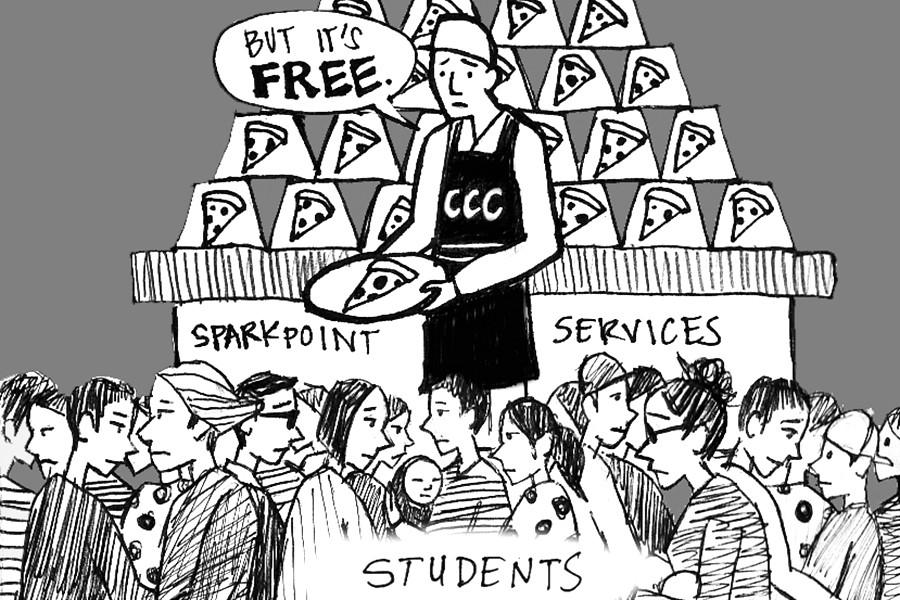Resource still missing
College fails to prime smooth transition for financial help
Feb 4, 2016
This is the first tax season since 2011 in which there are no resources on campus where students can seek financial coaching because Single Stop USA shut down when its $74,000 grant ended in the spring 2015 semester.
While Contra Costa College is currently working to replace the non-profit organization that paid for the cost of students taxes, legal services and food with a similar organization — SparkPoint — the college did not plan a smooth transition despite early warning signs Single Stop could not sustain itself.
According to a 2011-12 Achievement Gap Report, compiled by the District Office of Research and Development, the program received $298,171 in grant monies to sustain operating costs from 2011-15.
It had to latch onto CalWorks in 2012 to continue helping students living in poverty have enough extra money to stay enrolled.
The Advocate finds the lack of foresight involved in getting a replacement program at the college ready before college could no longer fund Single Stop as an egregious blunder — especially considering the student population CCC serves.
During the three years it served the college, the state approved about $7.85 million in Board of Governor Fee Waivers, according to the California Community College Chancellor’s Office Financial Aid Summary Report.
While the BOG waiver is not directly connected with Single Stop, the amount of money granted to the college to pay off these institutional costs shows people in CCC’s service area need these programs.
Former Single Stop Manager Teresea Archaga said most students came to the office when their financial aid fell through or when they needed help with their taxes.
But because college administrators planned for Single Stop to eventually be able to pay its own operating costs, the college was not ready to find a replacement when it could no longer support the non-profit program.
If only they thought about how Single Stop struggled? The truth is that students who want to go to college, but can’t afford it are with one less resource.


